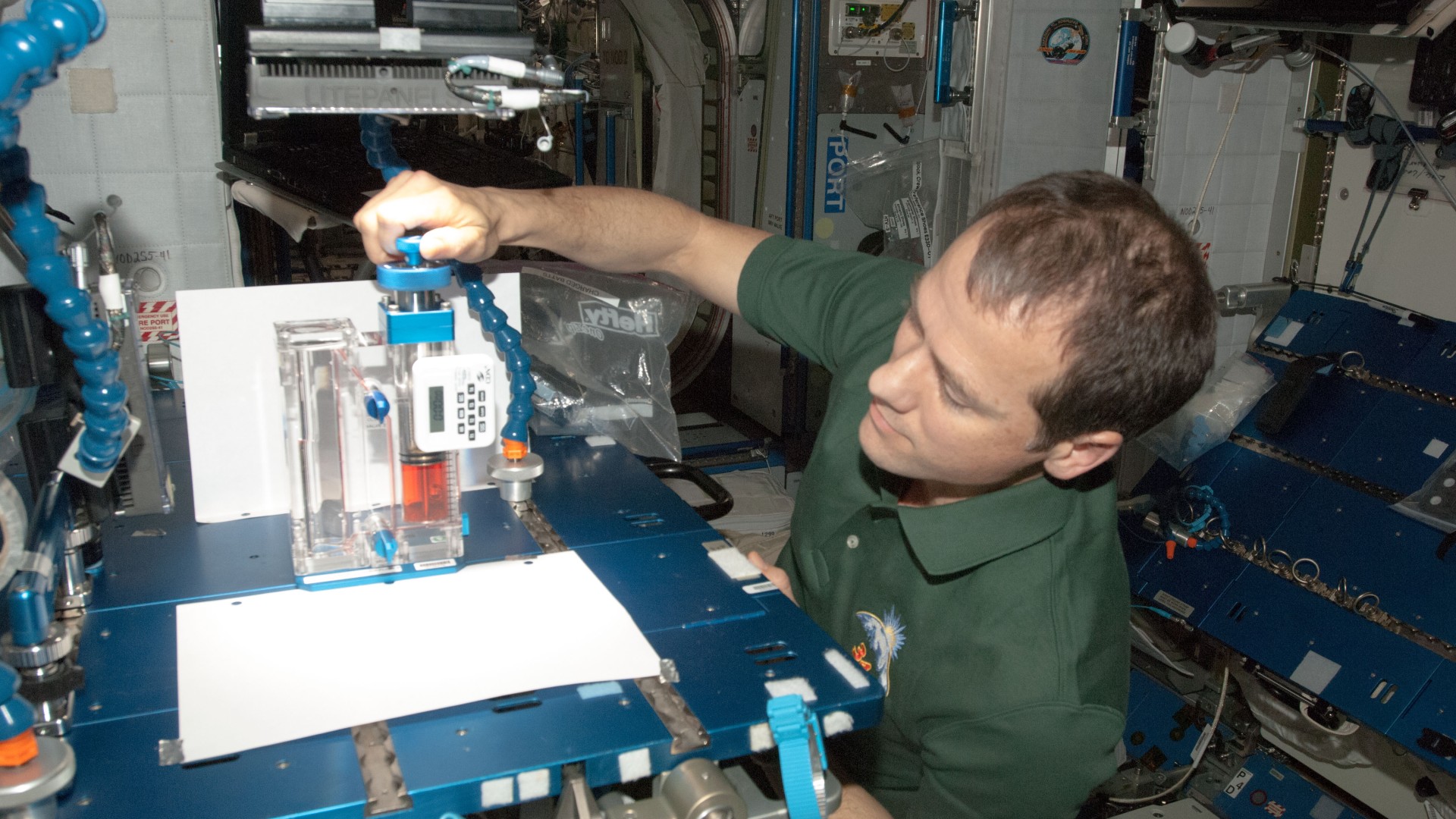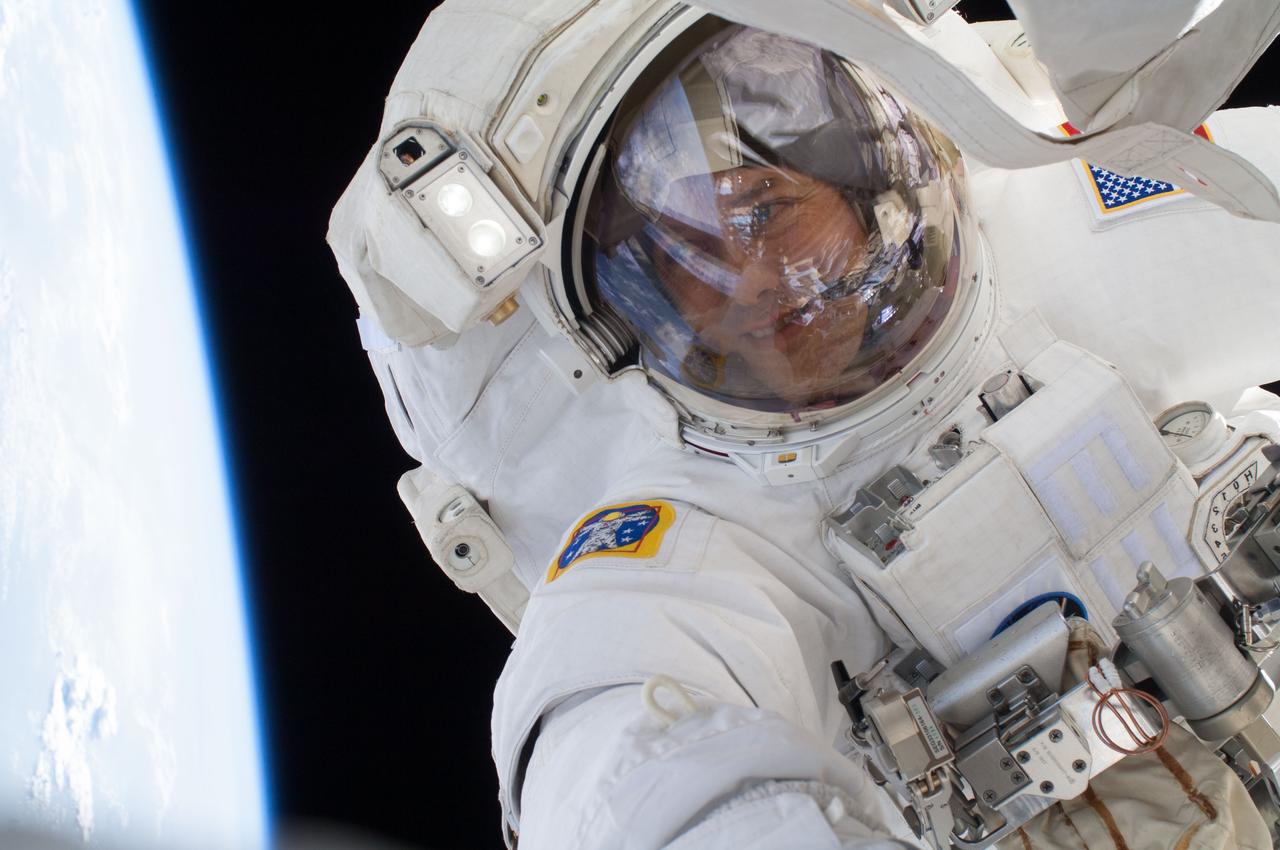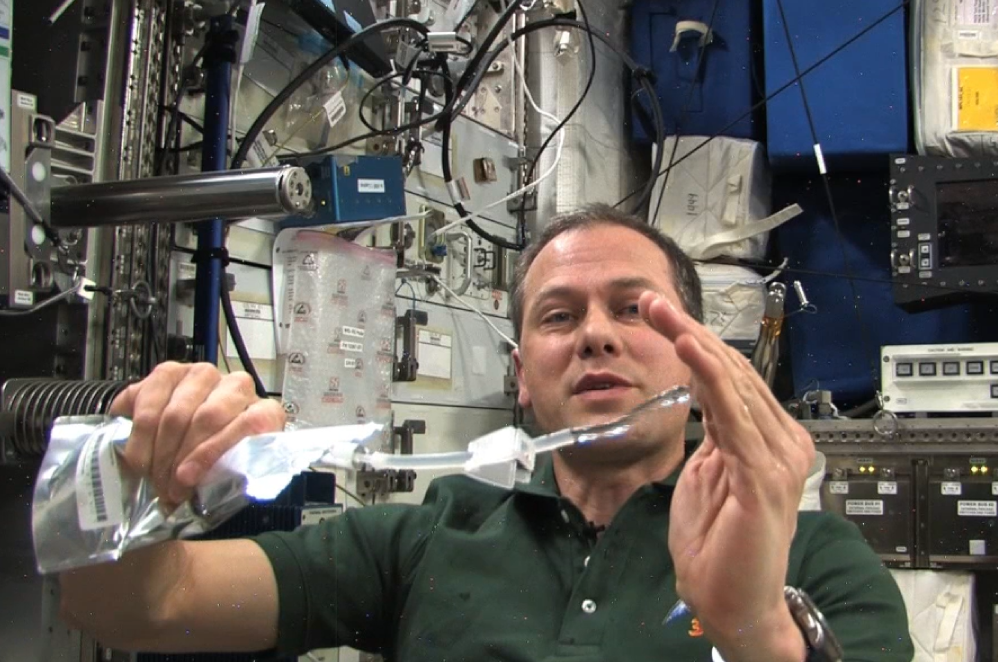
In the microgravity environment of low Earth orbit, there are many more experiments and research opportunities that can take place in the fields of medical science and developing biomedical technologies that can benefit us on the ground.
That's because microgravity makes alterations to organisms such as human bacteria and viruses, DNA, and even transforms the way cells function, enabling astronauts to conduct research that wouldn't be possible elsewhere. But astronauts on the International Space Station (ISS) are not just conducting the experiments; they are the focus of some research as well. Impacts to astronaut health continue to be studied with a goal of advancing the care and treatment of issues associated with aging, osteoporosis, wound healing, and more.
To learn more about this cutting-edge area of research, Space.com had an opportunity to talk with veteran NASA astronaut Dr. Tom Marshburn, now the Chief Medical Officer for Sierra Space, about what he's seen over the years and how spaceflight continues to pave the way for advancing medical capabilities.
Related: Meet the Crew-3 astronauts launching on SpaceX's Crew Dragon spaceship Endurance
Space.com: How did your early training and education help you get into the field of spaceflight and medicine?
Marshburn: I have a degree in engineering. That was essential for being able to think of medicine in a more of a systems way, which is essential working in the space program communicating with engineers all the time. You also need to fit into a system; a spacecraft has to work primarily to keep people alive and working efficiently. I was in emergency medicine, including as an attending for ten years, prior to joining the astronaut corps. That practice included being a flight surgeon for NASA working in mission control.
All of that background I think helped me a lot in space because when you're up there, you're doing a lot of things. You're a plumber, an electrician, a mechanic, you're doing spacewalks, science, a little bit of maintenance. And so understanding how mission control works and the decisions they have to make, it makes a huge difference not just from the skills base but also from a communication standpoint.
Space.com: There have been so many advances and changes since then, what have you observed now having worked both on Earth and up in space on the ISS?
Marshburn: I focused my early medical research on spaceflight in space physiology related topics, so for me, that hasn't changed too much. Working with Sierra Space, being able to manufacture and do research in space to really accelerate what's happening here in labs and on the ISS; it's been eye-opening.
All the ISS discoveries that are being made about how life at the cellular level changes when you remove the effects of gravity, that awakening has greatly widened my aperture as to what can happen in space and what needs to be done. My experience up there and as a flight surgeon has opened my eyes to what happens to human beings when we live up there for six months or more and how that matches the aging process, except it's accelerated. You can do all kinds of studies that have to do with atrophy, cardiovascular weakness, neurovestibular weakness … What happens to us in just a few months would happen to somebody on the ground over several decades and so the ability to study that to enhance patient care on the ground is fascinating.
Space.com: Let's focus on an example about how research that's being done in space benefits medical issues that we have here on Earth.
Marshburn: The practice of medicine in space greatly informs practice of medicine on the ground in a very positive way. The effects on the human body are profound. We're just beginning to understand them; they have direct correlations to things that happen on Earth. You might have heard of the Spaceflight Associated Neuro-ocular Syndrome (SANS), where vision changes. It looks like our intracranial pressure might be the culprit. We're not sure yet, because fluid shifts kind of cram up into your brain and increase the pressure there, and that affects the back of your eye.
There are medical syndromes on the ground that match that. You get an immense amount of interest and effort from physicians to work to solve that problem. All kinds of medical indications spawned from SANS. They understand that those flow patterns so much better and the connection to the back of the eye that they're beginning to find out things like unexplained headaches and why those happen to people on the ground.

Space.com: I find it very interesting how many ways space makes so many things possible for us here on Earth. Especially when it comes to the medical field, I don’t think we realize how many things that are part of our lives came from research made possible by spaceflight.
Marshburn: CAT scans, software to do that very complex job of coalescing all of these images into one 3D representation of the inside of our bodies, that came from the lunar lander from the Apollo program. Another example was a beautiful experiment that I got to be a part of when we were looking at capillary flow. On the space station, we were tracking fluid through all these different shapes and channels.
It turns out tiny picoliter volumes of fluid on the ground act just like fluids in space. That has enabled us to talk to some groups that are developing the ability to put an entire big box laboratory machine onto a single chip. They're able to redirect the flow of a single drop of blood because that's all you need for a lot of the analysis that needs to be done. It's resulted in devices that have been used, last I checked, in Africa to diagnose HIV in populations and numerous other applications.
Space.com: Some of the discoveries also come from creating what you don't currently have in space, and then from that you use what you've created to help doctors in our hospitals. For example, it’s not like you can get a huge machine on the ISS like we have when we go to the emergency room.
Marshburn: We don't have an X-ray machine in space, so how can we do diagnostic imaging? How do we take care of people if you need to look inside? We began to do ultrasound studies on the body. It turns out there's a lot you can do with it.
I was a part of numerous studies on the ground where they were looking at every system in the body; I was looking at bones, some people were looking at what could be seen in the lungs. They found out that you can actually track the movement of the lining of the lungs, of the pleura, and its interface with the whole body of the torso, where the ribs are. That discovery, which might not seem a big deal, is a wonderful way to detect pneumothorax, a collapsed lung. That’s where a lung gets air in that space and will collapse.
One of the primary killers of people after trauma, as they come into the ER, is they've got a collapsed lung, and the detection of that has to be even faster than your ability to roll up a big x-ray machine and take an x-ray. This is completely directly related to spaceflight research — put an ultrasound probe on somebody that has a collapsed lung, stick a needle in, let the air out, and save the patient. It's called the Focused Assessment with Sonography in Trauma (FAST) upper exam to include the pneumothorax, and it's now part of practice in the U.S. and around the world.

Space.com: Stemming from that question, you don't have an entire hospital with unlimited resources on the ISS, so I can imagine there are challenges and ways you've had to adapt to conduct the research you've been doing.
Marshburn: We think about that all the time. In low Earth orbit, we have access to experts on the ground. Can you take a geologist, a test pilot, or a doctor that hasn't practiced for 10 years and have them do something effective in space? We need an entire system, so it's somewhat limited. I don't have an operating suite, for instance. But, maximizing our capabilities for televideo for diagnostic imaging through ultrasound and remote guidance has resulted in some techniques that have been used.
The other step is, especially as we go to Mars, we won't be able to have a real time conversation like we're having right now. It might be that packaged AI [can] do [medical literature] searches and provide a way that is understandable and immediately accessible to people on a remote vehicle that has no access to other Earth resources. Figuring that out will also help doctors in a busy intercity ER. It might take a half an hour to do research on a laptop to get a medical answer to a question, and AI certainly helps with that. Maximizing the capability for remote spaceflight will be a big deal.
Space.com: You’ve spent time in your career on the ISS doing research in space, so what does it look like now being back on the other side of things on the ground and working for Sierra Space? What are you most looking forward to?
Marshburn: One thing is to help build a human spaceflight program and another is to really maximize the laboratory that we're going to be putting inside of our destination. It is a large expandable habitat that we'll be launching in a few years. I've been putting on my crew hat to work with the scientists and the business development team to explain what a person could do once we get an astronaut on board and what can be done automatically. We haven't addressed all of the advantages of working in the laboratory where there is no effect of gravity because you're in orbit.
What it's going to mean for the future of medicine and treatment of people is that it’s going to be an acceleration of drug development. You can grow perfect crystals without any of the crystal growth being disturbed by defects or gravity. You can grow perfect crystals of proteins so the pharmaceutical companies can identify all the sites on that protein that are the effective sites and develop drugs that are much more targeted and much more effective. It's already been done, just little pieces, and we're going to be doing that on a massive scale. Once you bring the crystal back on Earth, then you can grow more crystals that match that one, so you can develop that on an industrial scale.
The other fascinating thing is individual cells affected by gravity. The cytoskeleton structure changes, and that changes the genetic expression of all cells. It turns cancer cells into really fast-growing cells, and some bacteria become more dangerous to humans.
What that allows us to do is accelerate the pace of development of vaccines and cancer drugs. We're partnered with Redwire, who's done bits and pieces of this on ISS and demonstrated it. So, we're going to do all of that work on a greater scale.
We're actually growing organs. So, you can imagine what that would do, not only being able to regenerate an organ for somebody, but importantly to also test 1,000 different perturbations of the chemotherapeutic agent and find out what actually is dangerous to the organ, what actually passes through and is effective. Building human tissue, that’s really the future of what we're going to be doing inside of our space stations.







